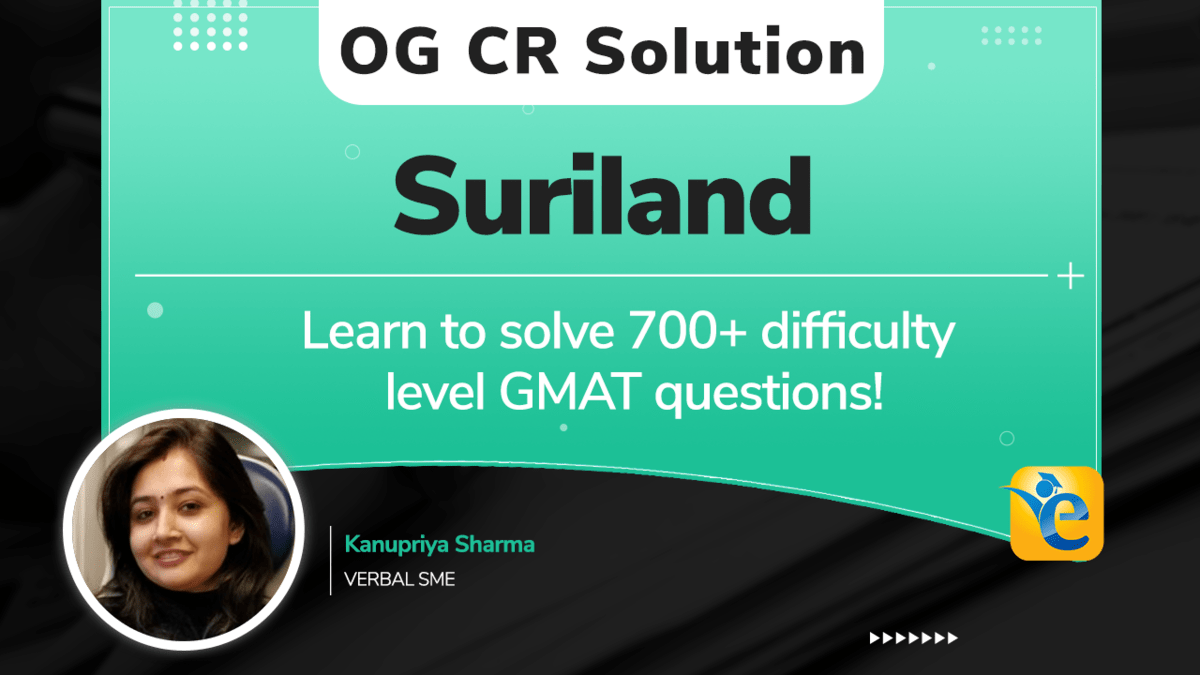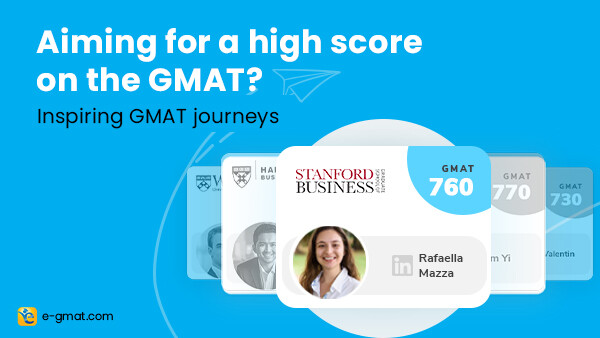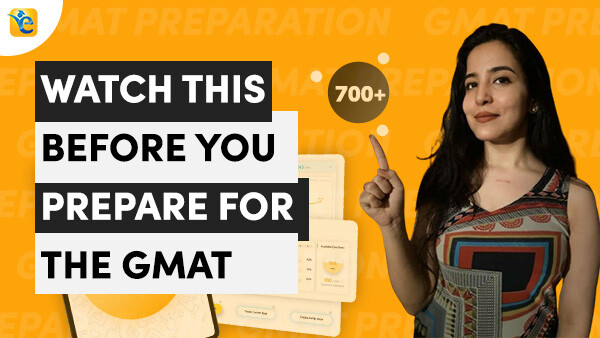In this article, we’ll look at the solution to this Official Guide (OG) question CR45650.01 – “Suriland cannot both export wheat…” on Critical Reasoning:
Suriland cannot both export wheat and keep bread plentiful and affordable in Suriland. Accordingly, Suriland’s wheat farmers are required to sell their crop to the government, which pays them a dollar per bushel less than the price on the world market. Therefore, if the farmers could sell their wheat on the world market, they would make a dollar per bushel more, less any additional transportation and brokerage costs they would have to pay.
Which of the following, if true, most seriously weakens the argument?
[Refer to GMAT Official Guide for options]
Here is some general information about this OG question:
- PQID: CR45650.01
- Difficulty Level: Hard
- Most Common Incorrect option choice: Choice C and Choice E
- Question Type: Weaken
OG Video Solution – CR45650.01 – Suriland cannot both export wheat…
Begin your GMAT preparation with the most reviewed GMAT prep company on GMAT club, which has delivered more 700+ scores than any other GMAT club partner. Achieve GMAT 740+ with our AI driven tools that give you personalized feedback at every step of your GMAT journey. Take our free trial today!
OG Solution – CR45650.01 – Suriland cannot both export wheat…
Hi Student, here I am with another beautiful Weaken question. Irrespective of whether you got the correct answer or not, this solution can teach you some fundamental aspects of weakeners. Hence, go through the description even if you think it was an easy question because you may find something that you did not even think of!
While many students find this question simple and easy, there is a consideration that confuses some students. Just for context, let me tell you that this question has been said to be incorrect (though it is not) by some GMAT tutors. So, enough of this background information, let’s now get to this question that confuses many.
As per the passage,
- The wheat farmers in Suriland have to sell their crop to the government.
- Suriland government pays them a dollar per bushel less than the price on the world market.
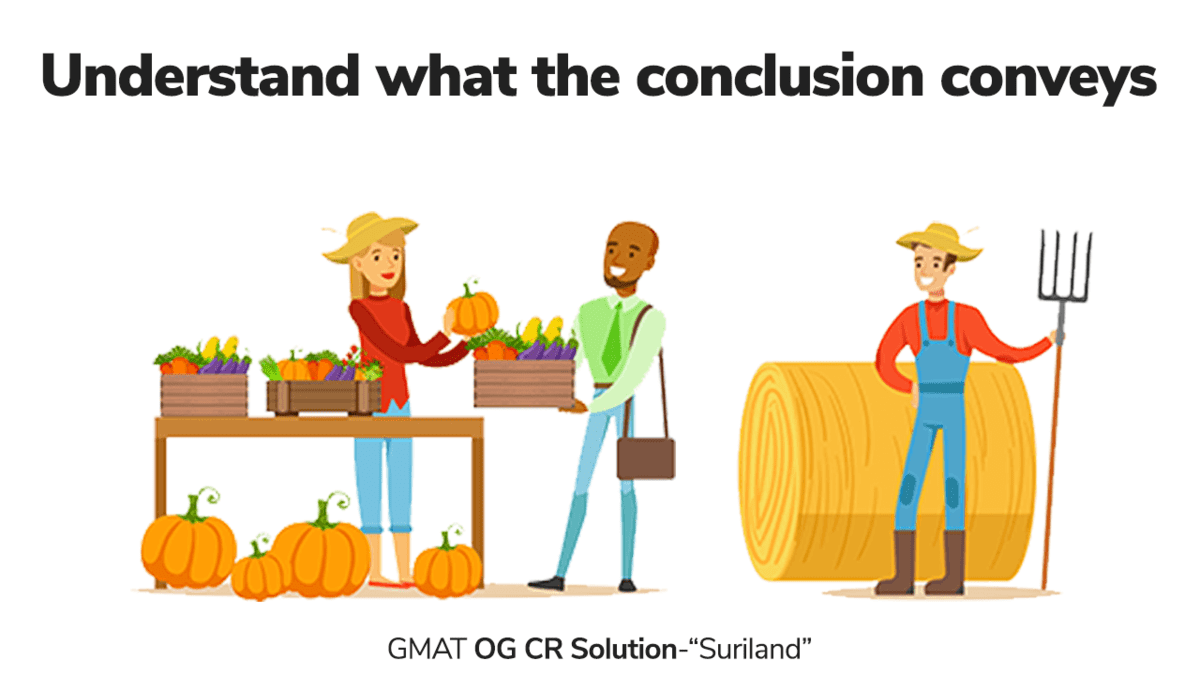
The conclusion is based on a hypothetical scenario in which farmers could sell their wheat on the world market.
Conclusion- Wheat farmers in Suriland would make a dollar per bushel more, less any additional transportation and brokerage costs they would have to pay.
In simple words, even after paying for transportation and brokerage costs, these farmers will get an additional dollar per bushel in the hypothetical scenario.
What is special about the conclusion here:
- It is valid only for a hypothetical scenario.
- The one-dollar profit is not dependent on transportation and brokerage costs, i.e., it is already factored in when the author claims that selling on international market will give a one-dollar/bushel profit.
- The additional one dollar is the difference between the price on the world market and that paid by the government. Net profit of the farmers is not relevant here.
For example, the following scenario is valid as per the conclusion:
- production cost per bushel is $5
- world market price is $3
- government pays $2
- Farmers will get an extra dollar from the world market even though the price on the world market is less than the production cost.
Choice C and Choice D
The second point here helps us eliminate choices C and D very easily. Just for context, choice C is the most popular incorrect choice, and almost 28% of students select it because they have not understood the conclusion properly.
Both these choices convey that these wheat farmers may have to spend significantly more on transportation and/or brokerage. However, by understanding the conclusion properly, we know that transportation and brokerage costs do not have any impact on the conclusion, as evident from the use of “less any.”
If you were able to understand this aspect of the conclusion, give yourself a pat on your back. You need to continue doing this level of analysis.
However, if you were among the 30% students who selected C or D, you now know where you faltered, and I am sure you will not repeat this mistake in any other question. So good for you too.
Choice B
Choice B reduces our belief in the conclusion by saying that if the hypothetical situation of Suriland wheat farmers selling their wheat on the world market is true, the price per bushel on the world market may actually reduce.
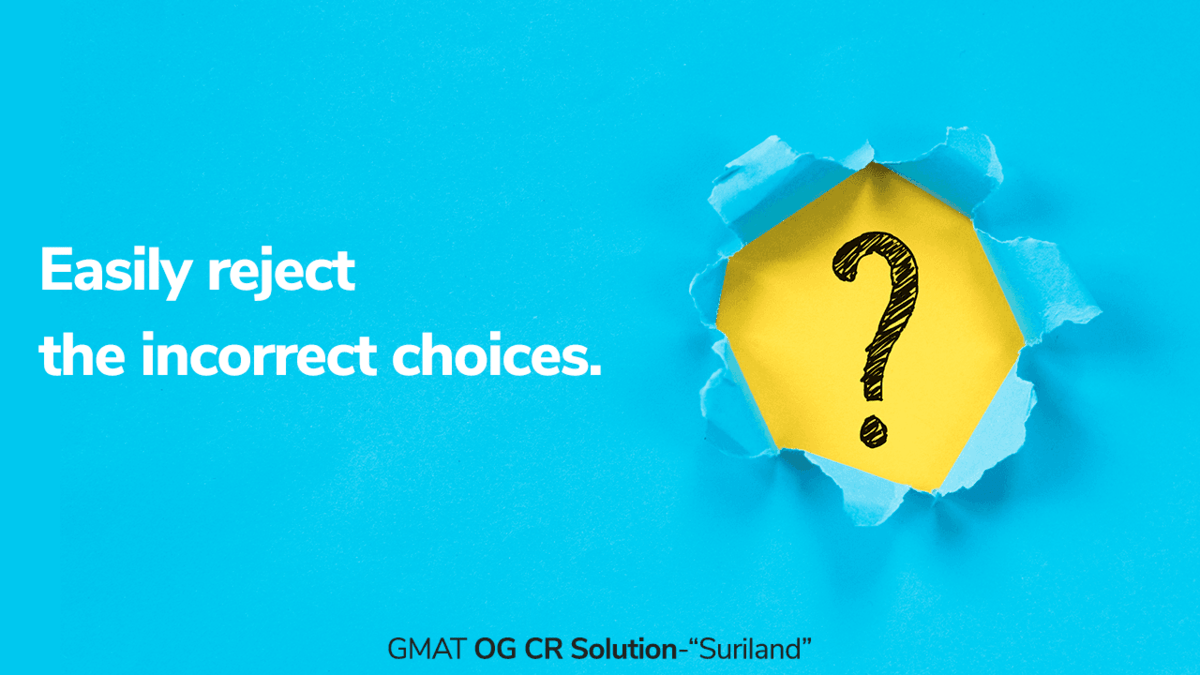
For example, let’s assume that
- The world market price of wheat per bushel is $10.
- It means Suriland government pays $9 per bushel.
If the hypothetical situation is true, the world market price may drop down to, let’s say, $4 per bushel.
Such a scenario makes us question if these farmers will actually get that extra dollar per bushel if they sell their wheat on the world market.
Hence, this choice is a weakener.
Simple enough! So, what makes this question hard then? Let’s see.
Why Students Reject Choice B
In the above example, we saw that the world market price reduced from $10 a bushel to $4 a bushel and questioned the conclusion.
However, we did not specify anything about what the government will be paying in the hypothetical scenario. After all, the conclusion is based on the difference in amount per bushel paid by the government and that on the world market.
Now, some students consider that
- The government will still pay a dollar less than the price on the world market.
- So, farmers will still be able to get a dollar per bushel more if they sell on the world market.
- Accordingly, choice B should not be a correct weakener.
The question here is- Whether the government will continue to pay a dollar per bushel less than the price on the world market, even if farmers start selling their wheat on the world market?
The answer is – We cannot say so.
The government may decide to pay much more than the price on the world market to save its farmers or to procure sufficient wheat.
Or
The government may continue to pay a dollar per bushel less or may be even more than a dollar per bushel less than the price on the world market.
Or
The government may keep a fixed price that is independent of the world price.
In essence, we have only been given the government’s price in the current scenario. We do not have any information regarding what it will be in the given hypothetical scenario.
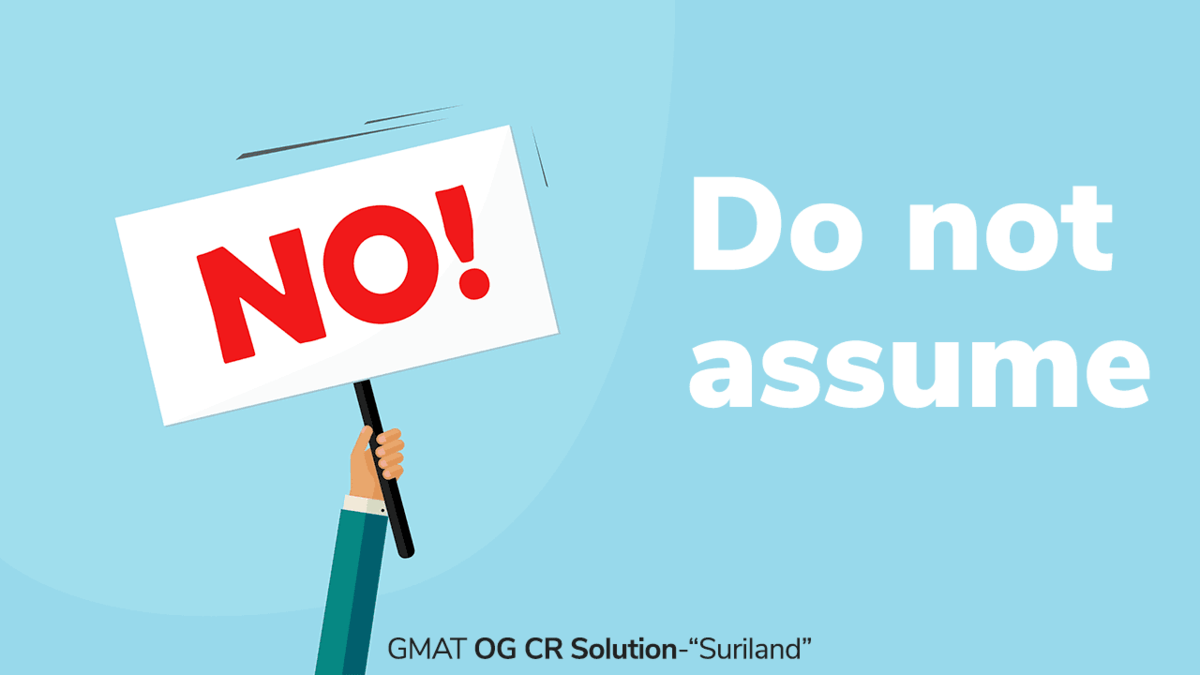
Hence, it is incorrect to assume anything about the government’s price in the hypothetical scenario.
Thus, the given consideration is incorrect.
Without knowing about the government’s price, how can we determine the impact of choice B?
If you too have this question, ask yourself whether a weakener is required to break the conclusion or just raise questions about it?
You are right! A weakener need not always break the conclusion. A statement bringing in a new piece of information that can raise doubts regarding the conclusion is a correct weakener.
Choice B plays the same role here.
In case the prices in the world market reduce in the hypothetical situation, it may not be possible for the farmers to get a dollar per bushel more for their wheat by selling it in the world market.
Hence, even though the choice may not definitely break the conclusion, it is a correct weakener.
I am sure your next question will be: How is choice E incorrect then?
Why is choice E incorrect?
Choice E talks about variation in the world market price in the usual scenario.
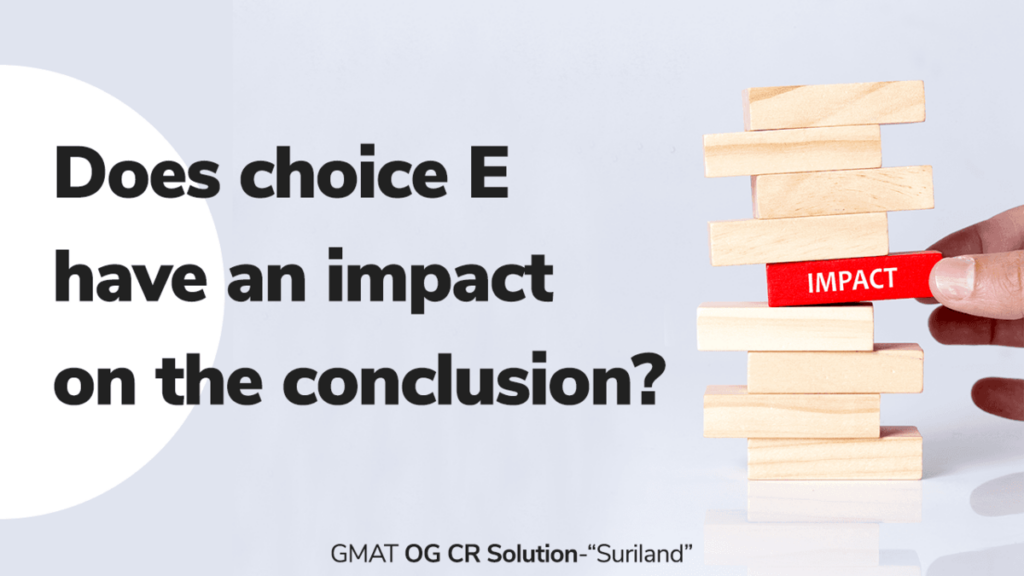
We know that in the usual scenario, i.e., when Suriland farmers are selling their produce to the government, the government pays a dollar per bushel less than the price on the world market.
So, as per this choice, the average cost of producing a bushel of wheat is, let’s say, $6 in Suriland, and the world price is $9 per bushel, occasionally dropping to $4 per bushel.
However, does that have an impact on the conclusion? No.
The conclusion is based on the difference between the price on the world market and that paid by the Suriland government. It is not about the absolute net profit earned by farmers, and thus, the information about the average cost of producing a bushel of wheat in Suriland is not relevant.
So irrespective of the variation in price on the world market, farmers will always get a dollar per bushel more if they sell on the world market.
Hence, choice E does not have an impact on the conclusion and is incorrect.
Choice B vs. Choice E
Many students ask that in choice B we considered that the government may not continue to pay a dollar per bushel less than the world market price in the hypothetical scenario, so why in choice E we are saying that government will continue paying that amount now?
The answer is – Choice B was about the hypothetical scenario in which Suriland farmers sell their produce on the world market.
Choice E, however, is about the present scenario in which Suriland farmers sell their produce to the government. Hence, we can say that government will continue to pay a dollar per bushel less than the price on the world market.
Let’s quickly check choice A
Choice A again talks about the production costs of farmers in Suriland and compares the same with the production costs of farmers of other countries. However, as discussed in choice E, the conclusion is based on the difference between the price on the world market and that paid by the Suriland government and not on the net profit earned by farmers.
Thus, irrespective of production costs, as long as farmers get a dollar per bushel more, the conclusion will not be weakened.
Thus, choice A is irrelevant.
3. Takeaways
- Understand the conclusion carefully. All the aspects should be clear. You can use some numbers as example to understand it better.
- A weakener need not break the conclusion. It is correct as long as it makes us doubt the conclusion.
- Pay special attention to the scenarios described. The scenarios considered in the premise and conclusion may be different. For example, the premise describes the present scenario while the conclusion is based on a hypothetical scenario here.
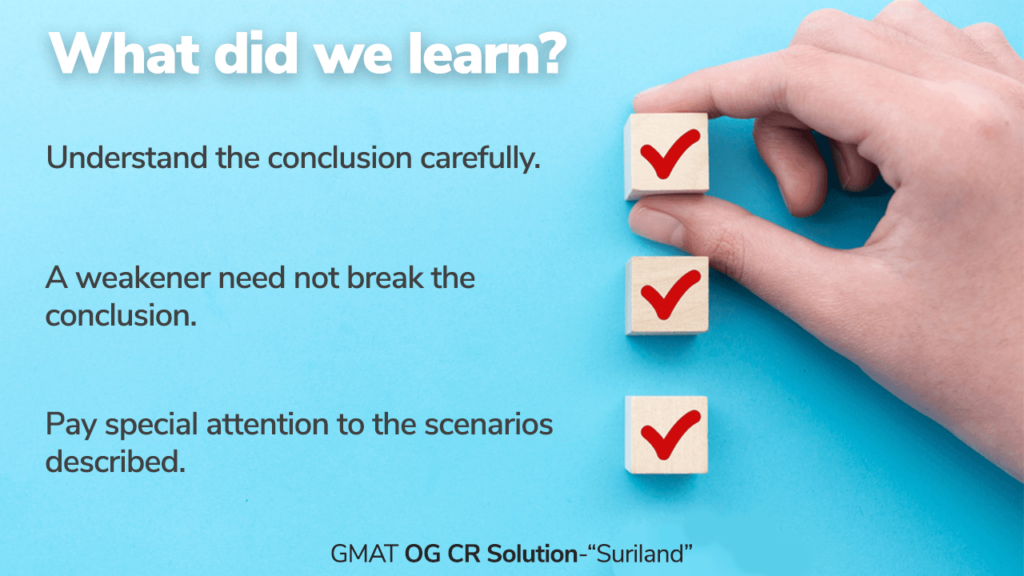
4. Practice OG questions
Do try the following Weaken questions to learn more about correct weakeners:
OG Question 1 – In a certain rural area, people normally dispose…
In a certain rural area, people normally dispose of household garbage by burning it. Burning household garbage releases toxic chemicals known as dioxins. New conservation regulations will require a major reduction in packaging—specifically, paper and cardboard packaging—for products sold in the area. Since such packaging materials contain dioxins, one result of the implementation of the new regulations will surely be a reduction in dioxin pollution in the area.
Which of the following, if true, most seriously weakens the argument?
OG Question 2 – When new laws imposing strict penalties for misleading corporate disclosures…
When new laws imposing strict penalties for misleading corporate disclosures were passed, they were hailed as initiating an era of corporate openness. As an additional benefit, given the increased amount and accuracy of information disclosed under the new laws, it was assumed that analysts’ predictions of corporate performance would become more accurate. Since the passage of the laws, however, the number of inaccurate analysts’ predictions has not in fact decreased.
Which of the following would, if true, best explain the discrepancy outlined above?
Happy learning!
Kanupriya
If you are planning to take the GMAT, we can help you with a personalized study plan and give you access to quality online content to prepare. Write to us at acethegmat@e-gmat.com. We are the most reviewed GMAT prep company on gmatclub with more than 2400 reviews and are the only prep company that has delivered more than 700+ scores than any other GMAT club partner. Why don’t you take a free trial and judge for yourself?


